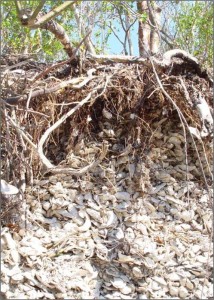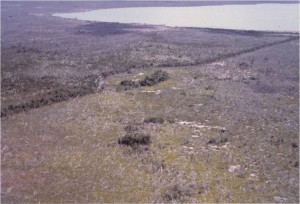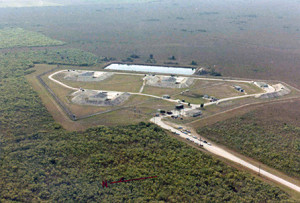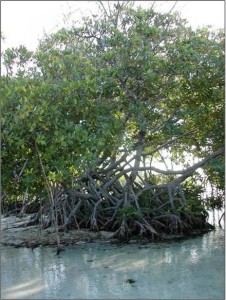 The Everglades is home to many unique and special plant and animal life. Tree islands are a big part of the Everglades’ landscape and ecosystem; in fact, they’re hundreds of them. You’ve probably seen them time and time again in photos of the wetland but not realized what they are. So, what is a tree island? A tree island is a naturally formed patch/clump of trees in the march that can resemble an island of trees.
The Everglades is home to many unique and special plant and animal life. Tree islands are a big part of the Everglades’ landscape and ecosystem; in fact, they’re hundreds of them. You’ve probably seen them time and time again in photos of the wetland but not realized what they are. So, what is a tree island? A tree island is a naturally formed patch/clump of trees in the march that can resemble an island of trees.
In the Everglades, tree islands are made out of hardwood trees, palms, ferns, and other tropical plants. Tree islands are usually in the shape of a teardrop due to the way the water flowed in the years prior to the drainage of the Everglades. The head of the tree island is where it meets the water. Often times, tree islands can be found in hammocks, which is on land that is a bit higher than the marshes and prairies of the Everglades. Because of their elevation, they are usually the only areas that remain drying during the Everglades’ wet season.
The islands are habitats for many birds, panthers, and other critters, because they offer a dry, safe place for them to stay, rest, and live. Over thousands of years, the water level in the Everglades has risen, so trees began to form on mounds (shell middens) to survive. As the tree grows, it draws water from the bedrock which contains carbonates and phosphates. The trees would then secret the excess minerals out of them, which turned into calcrete that increased the elevation and volume of the islands to protect the island and the trees.
Although it was long believed that these tree islands were formed naturally from the bedrock rising, it is now thought that these tree islands were formed by human middens (trash piles). When archologies and researchers studied the layers within the islands, they found bones, charcoal, and human artifacts. Although not all tree islands are human made, many of them were created by people, like the Calusa tribe, who lived in the Everglades thousands of years ago.
Currently, many of the tree islands are maintained by airboat operators or use as hunting camps by “Gladesmen” in the east section of the park.
Want to see some of these tree islands up close? A great way to view these plant communities is on an airboat. An Everglades airboat tour can bring you around to get a great view of these beautiful and old tree islands, while also viewing lots of other tropical plant life. To book an airboat tour, call Captain Mitch of Captain Mitch’s Airboat Tours today at 800-368-0065 or click here.
 The native people who lived in the Everglades left plenty of evidence behind of their existence. This evidence truly showed the people knew how to manipulate the land and areas around them to ensure their survival as a people. Besides tools, mounds, and tree islands, the native created systems of canals. These canals show the engineering and organization skills these people practiced.
The native people who lived in the Everglades left plenty of evidence behind of their existence. This evidence truly showed the people knew how to manipulate the land and areas around them to ensure their survival as a people. Besides tools, mounds, and tree islands, the native created systems of canals. These canals show the engineering and organization skills these people practiced. Not only is the Everglades a beautiful landscape to explore, you also can get a history lesson while in the Park. In the park, the Nike Hercules Missile site stands, and it happens to be a relic of The Cold War. Visitors are able to visit the Nike Missile Base by a ranger-guided walk that is offered in the months of December through April. The site is home to 22 buildings and structures.
Not only is the Everglades a beautiful landscape to explore, you also can get a history lesson while in the Park. In the park, the Nike Hercules Missile site stands, and it happens to be a relic of The Cold War. Visitors are able to visit the Nike Missile Base by a ranger-guided walk that is offered in the months of December through April. The site is home to 22 buildings and structures. Seeing as it’s been around for years and years, it’s no surprise the Everglades has quite a bit of archaeological heritage within it. Native people have lived in the Everglades long before European settlers came to Florida and began settlements. Below, we’ll share some information with you on shell works, which is one of the archaeological heritage sightings you can find throughout the Park that give visitors insight into the Everglades’ past.
Seeing as it’s been around for years and years, it’s no surprise the Everglades has quite a bit of archaeological heritage within it. Native people have lived in the Everglades long before European settlers came to Florida and began settlements. Below, we’ll share some information with you on shell works, which is one of the archaeological heritage sightings you can find throughout the Park that give visitors insight into the Everglades’ past.





